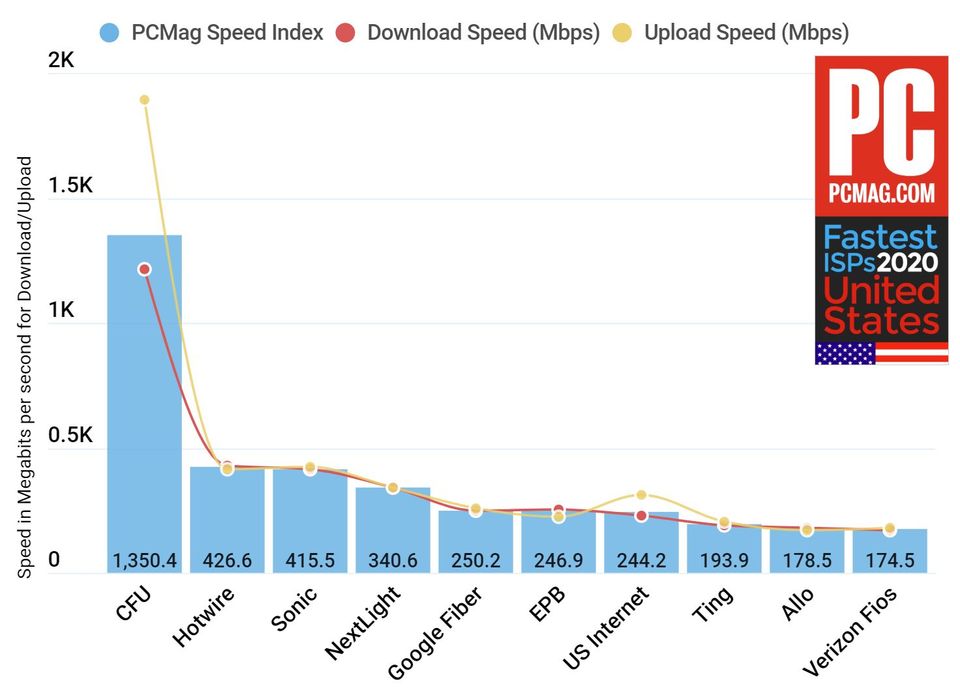Supplier of the community ISP movement
A recurring theme in the research we’ve been conducting into community internet providers has been the role of Ubiquiti. A US based manufacturer and provider of (mostly wireless) networking equipment and products. Their role in the community and wireless internet provider industry has been substantive and has been a catalyst for their proliferation.
In this issue of Future Fibre, let’s take a look at the company, and some of their product lines, to get a better understanding of what is possible.
I’ve been experimenting and playing with Ubiquiti gear as part of my emerging smart farm venture. While fibre optics are the preferred and ideal upstream connection, wireless can be effective for both last mile and on-site. Certainly this is the case in most homes. Fast internet to your building, but poorly managed WiFi becomes the bottle neck or limiting factor for your devices and Internet usage.
While Ubiquiti focuses primarily on enterprise customers and wireless internet providers, they also have consumer focused product lines, and all of their equipment is accessible to anyone who wants to buy it.
The company also uses quite a bit of open source technology, and makes it’s proprietary management software available for free, so building and controlling custom networks is fairly straight forward. Similarly this makes remote control of networks relatively easy, and many Ubiquiti users also create and manage the networks at the homes of other family members. (Note to self: Ubiquiti gear could also be used to enable smart homes for seniors and connect that to elder care options.)
Ubiquiti was founded in 2005 by Robert Pera. The company went public in 2011, making Pera a billionaire, and in 2012 he bought the NBA’s Memphis Grizzlies (formerly the Vancouver Grizzlies). Like many other companies, Ubiquiti has been buying back shares, and Pera currently owns nearly 90% of company shares. While it remains publicly traded, it’s not a very transparent or public company.
Their stock is currently up and rising, as amidst the (market) turmoil induced by the pandemic and resulting crisis, the value and role of the internet in our lives is only increasing. As a company, Ubiquiti is poised to benefit from both increased demand for faster Internet services and speeds, and home based users wanting to upgrade their connections to manage increased remote work and learning.
As with any technology company, a key and essential driver of their success are their users. The community of users that exists around the company, both on their official forums, but also on Reddit, makes use and deployment of their products quite a bit easier. Knowing that there are people willing and able to help you (at not cost) makes a big difference.
However having such a diverse community is not always good for the company. While Ubiquiti has a lot of positive aspects, they seem to suffer from an unclear strategy, combined with contradictory product lines, and in some cases sub-par products. The community thankfully helps keep track of all this, which is great for (potential) users, maybe not so much for the company itself.
This is not an uncommon situation in the technology industry. The user community does the heavy lifting of customer relations, while the company itself fails to invest in effective community liaisons or representatives, and a gap emerges (and sometimes grows) between the users and the company. This will be worth watching in the short term future, to see if Ubiquity closes this gap or if it widens.
Part of the issue is the diverse range of product lines that Ubiquiti offers. On the one hand they may add unnecessary complexity and confusion, on the other hand they do not entirely interoperate or work together easily.
Their AmpliFi line is focused on making home connectivity easy. These are basically plug and play devices that automate almost all of a home network, enabling a user to extend full and fast connectivity throughout their house. This line is not that great, and designed for people who do not want to learn.
The UniFi line is their primary WiFi platform, and is designed for enterprise clients and people who want greater control and quality with their home connection. I just switched my home network to UniFi and the difference is notable. Range, quality, and speed are all dramatically improved. UniFi networks are managed using software that can either be purchased on a dedicated device or installed for free on your own hardware. In my case I used a Raspberry Pi.
The Protect line is the company’s surveillance and security gear, but it is also sometimes cross marketed as UniFi. It features a range of cameras that are IP based and powered via PoE (Power over Ethernet). Unfortunately it does require a different software application to control the video, sometimes called Protect, but also called Unifi Video. While they market a couple of devices to control and record video from the cameras, you can install this software for free, on hardware you already have, which I did first on a windows desktop, and then on a linux (Ubuntu) desktop, which now acts as my NVR (network video recorder). It is possible to control and use these cameras using other kinds of software not manufactured by Ubiquiti, but their software is super easy to use.
A lot of Ubiquiti’s equipment is PoE, which is convenient when you want to install a device and don’t have a power outlet or power source nearby. I did this with the cameras we installed, merely running ethernet cable to the desired camera position, and the device is then powered and connected from the same source.
I also bought special ethernet cable and ethernet connectors from Ubiquiti that come with special shielding and grounding wire. When properly installed this can protect your gear in the event of a lightning strike, which can be a risk when installing gear outside (and on poles) as I’ve done.
While the outside equipment is only rated to -10 degrees Celsius, I’ve found many Canadian users who have their gear out all year (in various cold climates with temperatures as low as -40) without issue. Although I’m curious to see for myself this coming winter.
The next major product line Ubiquiti offers is their AirMax line. This is largely focused on wireless providers and IPSs who use this equipment to build their networks and connect clients. These are the radios that enable high speeds at significant distances.
I bought a pair of one of their smaller AirMax radios, called NanoStation AC locos, that have a range of about 10+kms and speeds of 450+Mbps. I’m using them to extend the internet from my house to my barn area. It’s maybe 150m, and not the best line of sight, but it provides a fast enough connection for six cameras to stream in HD quality simultaneously, along with whatever connectivity needs our devices require when we’re out there.
The distance is close enough that UniFi gear could have done the job, but not with the same speed or reliability. This is a good example where the company may have pointed me to staying with UniFi gear, but reading user experiences made it clear that the AirMax radios were the way to go.
However much to my initial confusion and frustration, the AirMax devices require completely different software to manage. UNMS or Unifi Network Management Software is required to operate the AirMax radios. It took me a little bit to realize that UNMS and Unifi were completely distinct, do not communicate, and that I had to bounce between the two to create and configure my network. This is another example of unnecessary complexity leading to confusion. There’s no reason why this software couldn’t be combined. A source of frustration for users of both who resent having to use the other when required.
Ironically a few years ago the AirMax line and the AirOS software used to operate these devices were hacked as a staging point for further infection and attacks:
Crooks Use Hacked Routers to Aid Cyberheists | @briankrebs | http://t.co/eE7SyVEFtt
— Swift⬡nSecurity (@SwiftOnSecurity) June 29, 2015
While it is not uncommon for networking gear to be targeted for such attacks, it still damages the credibility of the manufacture that was compromised. Dividing the attention of maintainers of administrators of these networks helps contribute to lax security or update practices.
With that said I have noticed that Ubiquiti takes security patches and updates seriously. All the equipment I installed was updated as soon as I connected them to my network and now constantly seek out future updates and alert me when they’re available.
Finally the EdgeMax line are carrier and enterprise grade networking equipment, that are designed to work with the AirMax radios, allowing providers and companies granular control over their networks. This is the line for advanced network administrators who are able to navigate the wide range of configuration options and available applications.
Ubiquiti has other product lines above and beyond what I’ve mentioned, but these are the main ones. They’ve got some equipment for fibre optic networking, although I’m not yet able to evaluate how they compare to competitors. Their wireless gear on the other hand is at the forefront of the industry, primarily due to affordability, although that has allowed them to build market share and a critical mass of users.
I am however interested in some of the company’s solar gear, which is specifically designed to work with and power their equipment:
I connected a @ubnt camera to my local network using only solar power and long range WiFi. A learning journey of NTC, ACDC, 802.3af PoE, NanoStations, solar controllers, weather forecasts and making it all work together reliably. 🤯 https://t.co/zl0GXUYR3m pic.twitter.com/L5c2GI492M
— Lars Klint 🌳🐏🚜 (@larsklint) June 14, 2020
Something I will explore in the near future to further extend connectivity across my property, in particular where there’s currently no power.
In one spot I’ve run ethernet about 130 metres, which is 30 metres further than is recommended, although it does currently work, enabling a camera in our second pasture. However any further would require either wireless, or burying fibre optic cable. I’m thinking of running a second cable roughly 100 metres and then setup a solar station another 100 or so metres further, that would power a wireless repeater extending connectivity towards the back of the property.
Price is certainly a big part of Ubiquiti’s success, but so too is ease of use. While I do have a background in computer networking, my knowledge is limited compared to someone who studied or went to school for this stuff. I’m impressed with how relatively accessible and comprehensible this equipment is.
This has allowed communities around the world to solve their connectivity needs, while also enabling new models of connectivity to emerge:
New relay in Abuja and.... A new network in Lagos just started! The stack of @ubnt liteAPs will be used to support the infrastructure of the network and provide mobile users internet access. https://t.co/y8bUBiREvy pic.twitter.com/MwoAYKXJkM
— Althea (@AltheaNetwork) June 11, 2020
Althea is an interesting model, one we’ll profile in a future issue of Future Fibre!
“Future Fibre” is a recurring series in the Metaviews newsletter where we share some of the research, other models, news, and ideas around community based connectivity. While the series is published via our newsletter, it’s also available via news.metaviews.ca/tag/fibre, so you can share the entire series with interested parties.
The series is sponsored by our friends at EasyDNS:

I’ve been an EasyDNS customer for almost 20 years (and I know a number of you are as well based on my recommendation). Mark Jeftovic the co-founder and CEO is a long time friend and Metaviews subscriber. EasyDNS is one of the best service providers on the Internet, and Mark ensures his customers have the benefits of the latest and most secure technology.
Mark also writes a smart newsletter called #AxisofEasy and has just published a fascinating book called “Unassailable”, which we recently reviewed. I’m thrilled that Mark shares my belief in the potential for micro-ISPs and is sponsoring this series as a result.
Metaviews is also now a partner in the AxisofEasy.com website that aggregates and amplifies content from us, Mark, and Charles Hugh Smith.



